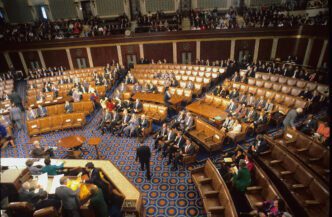Executive Summary
The Story So Far
Why This Matters
Who Thinks What?
The Trump administration is actively evaluating the implementation of “portable mortgages” as a key strategy to address the ongoing housing affordability crisis and stimulate the stagnant housing market. Federal Housing Finance Agency Director Bill Pulte announced this past week that officials are considering allowing homeowners to transfer their existing mortgage rates to new properties, aiming to increase housing supply.
Addressing Housing Affordability
The proposal comes as part of broader efforts by the Trump administration to tackle housing affordability. Pulte, who oversees Fannie Mae and Freddie Mac—government-backed entities guaranteeing over half of US mortgages—stated that officials are also weighing options for making mortgages more assumable and potentially introducing a new 50-year mortgage.
A significant portion of homeowners currently hold mortgage rates below 4%, according to a Redfin analysis of FHFA data. With average mortgage rates persistently ranging between 6% and 7% in recent years, many homeowners have been reluctant to sell, fearing higher monthly interest payments on new loans.
How Portable Mortgages Would Work
A portable mortgage would allow a borrower to transfer their current mortgage and interest rate to a new property upon moving, rather than securing an entirely new loan. For example, a homeowner with a $200,000 balance at a 3% rate could transfer that specific loan amount and rate to a new home.
However, complexities arise if the new home is more expensive. In such cases, the buyer would need to cover the difference with cash or by taking out a second, smaller loan, likely at current higher interest rates. The primary goal is to encourage more homeowners to list their properties, thereby increasing the housing supply.
Potential Challenges and Concerns
Experts like Susan Wachter, a professor of real estate at the Wharton School, question the potential impact on overall supply and the feasibility of implementation, suggesting that congressional action might be necessary to resolve legal issues. The Federal Housing Finance Agency has not provided further details, stating it is studying a “wide variety of options” to lower housing costs.
There are also concerns that portable mortgages could disrupt the market for mortgage-backed securities. If fewer loans are paid off early due to portability, investors might face increased risk, potentially leading them to demand higher interest rates to compensate, which could ultimately raise overall mortgage rates.
Justin Demola, president of Lenders One, highlighted the logistical challenges. Mortgage agreements are legally tied to specific properties, making the transfer of a loan to a new address akin to rewriting a contract. Demola described the process as a potential “logistical nightmare.”
Other Proposals Under Consideration
The Trump administration is also exploring a 50-year mortgage option, though this proposal has faced criticism from housing experts. Critics argue that the minimal monthly savings would be outweighed by significantly higher interest costs over the extended life of the loan compared to a standard 30-year fixed mortgage.
Additionally, the administration is considering increasing the use of assumable loans, where homebuyers take over a seller’s existing mortgage and rate. While many government-backed loans, such as those from the Federal Housing Administration, are already assumable, Demola noted that few first-time homebuyers utilize them due to the typical requirement for a large cash payment or a second mortgage to cover the equity.
Outlook on Housing Initiatives
The Trump administration’s evaluation of portable mortgages, alongside other proposals, underscores a concerted effort to address the nation’s housing affordability and supply challenges. These initiatives aim to incentivize homeowner mobility and inject liquidity into the market, though their practical implementation and long-term effects remain subjects of expert debate and further scrutiny.








